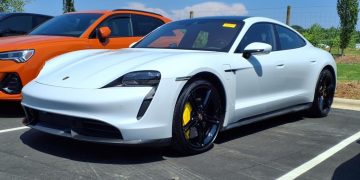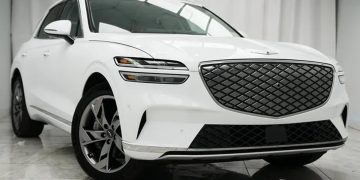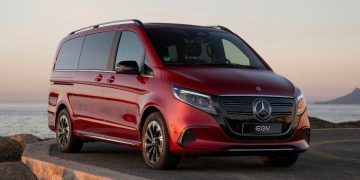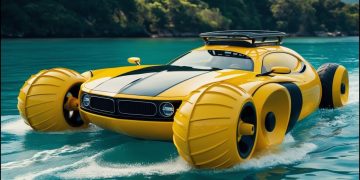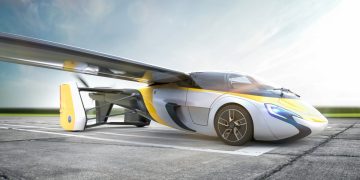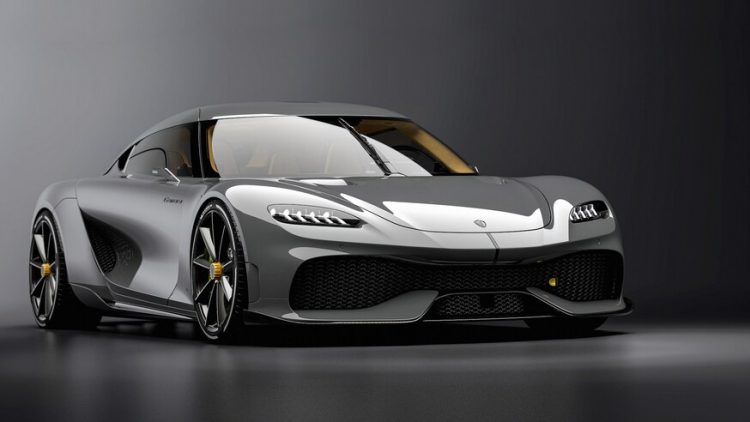The automotive world is undergoing a dramatic transformation, and one of the most exciting changes in the industry is the shift towards electric vehicles (EVs). While electric technology has been gradually entering mainstream markets with electric sedans and SUVs, the question remains: will the future of sports cars follow the same electrification trend? Sports cars are traditionally known for their high-performance combustion engines, producing thrilling sounds, rapid acceleration, and sheer driving pleasure. However, as the world moves toward sustainability and reduced emissions, many manufacturers are beginning to embrace electric technology in the sports car sector.
In this article, we will explore whether the future of sports cars will indeed be dominated by electric vehicles. We’ll examine the advantages and challenges of electric sports cars, the current electric offerings in the market, and how the electric revolution may redefine performance, design, and the driving experience.
1. The Rising Demand for Sustainable Performance
The transition towards electric vehicles is driven by the increasing global demand for more sustainable transportation options. Concerns about climate change, stricter emissions regulations, and the need for cleaner energy sources have led to a surge in electric vehicle adoption across various segments of the automotive industry.
Environmental Benefits
One of the most significant advantages of electric sports cars is their zero emissions at the tailpipe. Traditional gasoline engines produce harmful emissions, including carbon dioxide (CO2), nitrogen oxides (NOx), and particulate matter, all of which contribute to air pollution and global warming. Electric sports cars, on the other hand, produce no tailpipe emissions, significantly reducing their environmental impact.
Additionally, electric vehicles can be powered by renewable energy sources, such as solar or wind power, further reducing their carbon footprint. As concerns about climate change intensify, electric sports cars will become an increasingly attractive option for eco-conscious consumers who want high-performance vehicles that are also environmentally friendly.
Government Regulations and Incentives
Governments around the world are also playing a critical role in the push towards electrification. Many countries have set ambitious targets for reducing greenhouse gas emissions and promoting electric mobility. For example, the European Union has introduced regulations to phase out internal combustion engine vehicles in the coming decades, and countries like the UK and Norway have announced plans to ban the sale of new gasoline and diesel cars by 2030 and 2025, respectively.
In response to these regulations, automakers are investing heavily in electric vehicle technology to meet future emissions standards and consumer demand. The electrification of sports cars aligns with this global shift, offering manufacturers a way to stay ahead of the curve while contributing to a greener future.
2. Performance: Can Electric Sports Cars Match or Surpass Traditional Performance?
Traditionally, sports cars have been defined by their powerful engines, high-speed capabilities, and the visceral driving experience they offer. This includes the raw sound of a roaring engine, the thrill of rapid acceleration, and the tactile feedback from the road. With the advent of electric drivetrains, many enthusiasts wonder if electric sports cars can deliver the same, or even superior, performance compared to their gasoline-powered counterparts.
Instant Torque and Acceleration
One of the most exciting aspects of electric powertrains is the instant torque they provide. Unlike internal combustion engines that need to build up revs to generate power, electric motors deliver their full torque output as soon as you press the accelerator. This results in rapid acceleration, with some electric sports cars achieving 0-60 mph times in under 2 seconds, something that was previously the domain of only the most extreme performance cars.
For example, the Tesla Roadster (2022 model) boasts a 0-60 mph time of 1.9 seconds, which is faster than many of the world’s most prestigious hypercars. Similarly, the Rimac Nevera, a Croatian electric hypercar, achieves an astonishing 1.85-second 0-60 mph time. Such figures are only possible because of the electric powertrain’s ability to provide near-instantaneous power to all four wheels, resulting in mind-blowing acceleration.
Handling and Performance on the Track
Electric sports cars also benefit from the fact that electric motors can be placed at different points in the vehicle, allowing for improved weight distribution and handling. This is particularly important in sports cars, where precise handling is crucial for track performance.
Many electric sports cars feature all-wheel-drive (AWD) systems, where electric motors power both the front and rear axles, providing excellent grip and stability during high-speed cornering and acceleration. The Porsche Taycan Turbo S and the Audi e-tron GT are prime examples of electric sports cars that utilize this technology for remarkable cornering and handling.
Furthermore, electric vehicles typically have a lower center of gravity compared to traditional sports cars. Since electric batteries are often mounted low in the chassis, they lower the vehicle’s overall weight distribution, resulting in better handling and less body roll during cornering. This contributes to an improved driving experience, especially in high-performance driving scenarios.
Driving Experience and Sound
One of the main concerns for traditional sports car enthusiasts is the loss of the iconic engine sound that accompanies a gasoline-powered car. The sound of an engine revving, the growl of the exhaust, and the symphony of mechanical power are integral to the visceral appeal of sports cars. However, electric vehicles are largely silent, which may reduce the emotional connection some drivers feel.
That said, some manufacturers are already working on artificial engine sounds that can be integrated into electric sports cars to simulate the aggressive roar of a traditional engine. The Porsche Taycan, for example, offers an optional sound experience that mimics the sound of a traditional Porsche engine. This solution may not completely replicate the traditional driving experience, but it offers a compromise that preserves the thrill of driving a performance car.
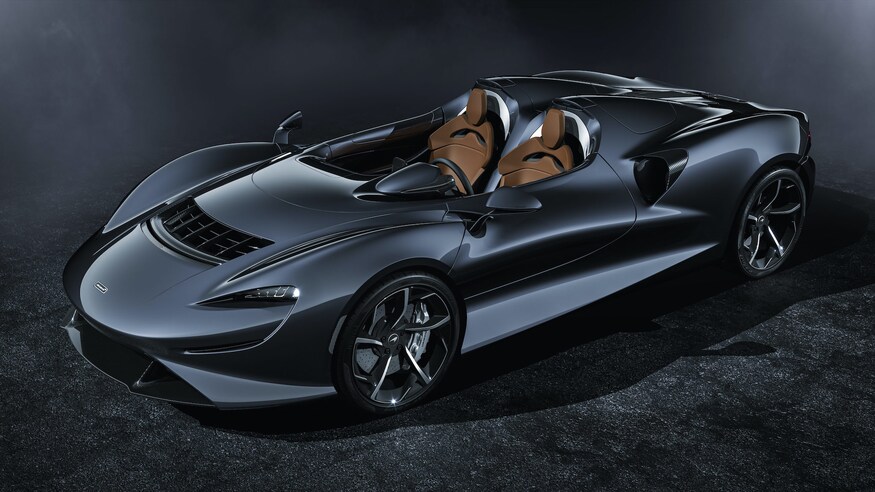
3. The Current Electric Sports Car Landscape
While electric sports cars are still in their infancy compared to traditional gasoline-powered models, several automakers have already introduced impressive electric performance vehicles. These cars prove that electric powertrains can deliver outstanding performance while offering the environmental benefits associated with electrification.
Tesla Roadster (2022)
Tesla has been a pioneer in the electric vehicle industry, and its upcoming Roadster is set to revolutionize the electric sports car market. The new Tesla Roadster is expected to deliver 1,000+ horsepower, achieve a top speed of over 250 mph, and accelerate from 0-60 mph in just 1.9 seconds. With such performance figures, the Roadster is poised to rival some of the world’s most prestigious hypercars.
Porsche Taycan Turbo S
The Porsche Taycan Turbo S is one of the first electric sports cars from a legacy automaker. It has received rave reviews for its performance, handling, and luxury. With a 0-60 mph time of just 2.4 seconds, the Taycan Turbo S proves that electric vehicles can deliver thrilling acceleration and world-class performance. The Taycan also features advanced suspension systems, dynamic handling, and a luxurious interior, making it one of the most well-rounded electric performance cars available.
Rimac Nevera
The Rimac Nevera is a hypercar that showcases the potential of electric performance. With an astonishing 1,914 horsepower, the Nevera can reach a top speed of 258 mph and go from 0-60 mph in just 1.85 seconds. Rimac’s electric powertrain delivers instant torque and incredible performance, establishing the Nevera as one of the most impressive electric sports cars on the market.
Lotus Evija
The Lotus Evija is another electric hypercar that combines British engineering with cutting-edge electric technology. With 1,972 horsepower, the Evija can reach a top speed of 200 mph and accelerate from 0-60 mph in under 3 seconds. The Evija’s lightweight design and advanced aerodynamics make it an extremely capable electric sports car, demonstrating that electric powertrains can be used to create high-performance vehicles.
4. Challenges in Electrifying Sports Cars
While the future of sports cars may be electric, several challenges remain before electric vehicles can fully dominate the performance car market.
Battery Technology and Range
One of the biggest challenges for electric sports cars is battery technology. While electric vehicles have made significant strides in terms of range, many sports car enthusiasts still crave long-distance driving and sustained high-performance capabilities. Batteries are heavy, and the energy density of current battery technology limits how far a vehicle can travel on a single charge. For sports cars, where rapid acceleration and high-speed driving are often integral to the experience, battery capacity becomes a limiting factor.
Charging Infrastructure
Another challenge is the development of widespread and fast charging infrastructure. While the availability of charging stations is increasing, electric sports cars need to be able to charge quickly and efficiently, especially during long drives or on racetracks. Current charging technology, while improving, may not be able to match the rapid refueling times of traditional gasoline-powered vehicles.
Cost and Affordability
Electric sports cars are generally more expensive to produce than their gasoline counterparts due to the high cost of battery technology and advanced electric drivetrains. While the growing popularity of electric vehicles may eventually lead to lower costs, electric sports cars are still considered premium products with high price tags. For many enthusiasts, the cost of owning an electric sports car may still be prohibitive.
Conclusion: The Inevitable Shift Toward Electric Sports Cars
The future of sports cars is undoubtedly moving toward electric powertrains. The performance advantages offered by electric motors, such as instant torque, rapid acceleration, and precise handling, make electric sports cars an exciting proposition for both manufacturers and consumers. Furthermore, the growing demand for sustainable transportation, along with stricter emissions regulations, ensures that electric sports cars will play a significant role in the automotive industry’s future.
While challenges such as battery technology, charging infrastructure, and cost remain, the innovations happening in the electric sports car market demonstrate that the transition to electric power is not only possible but is already underway. As technology advances and consumer acceptance grows, we can expect to see even more groundbreaking electric sports cars that deliver exceptional performance while reducing environmental impact.
In conclusion, electric sports cars represent the future of performance driving—combining sustainability with cutting-edge technology, unrivaled acceleration, and thrilling driving dynamics. The question is no longer whether the future of sports cars will be electric, but rather, how quickly will we embrace the electrification of performance vehicles? The answer seems clear: electric sports cars are here to stay, and their dominance in the high-performance sector is inevitable.









